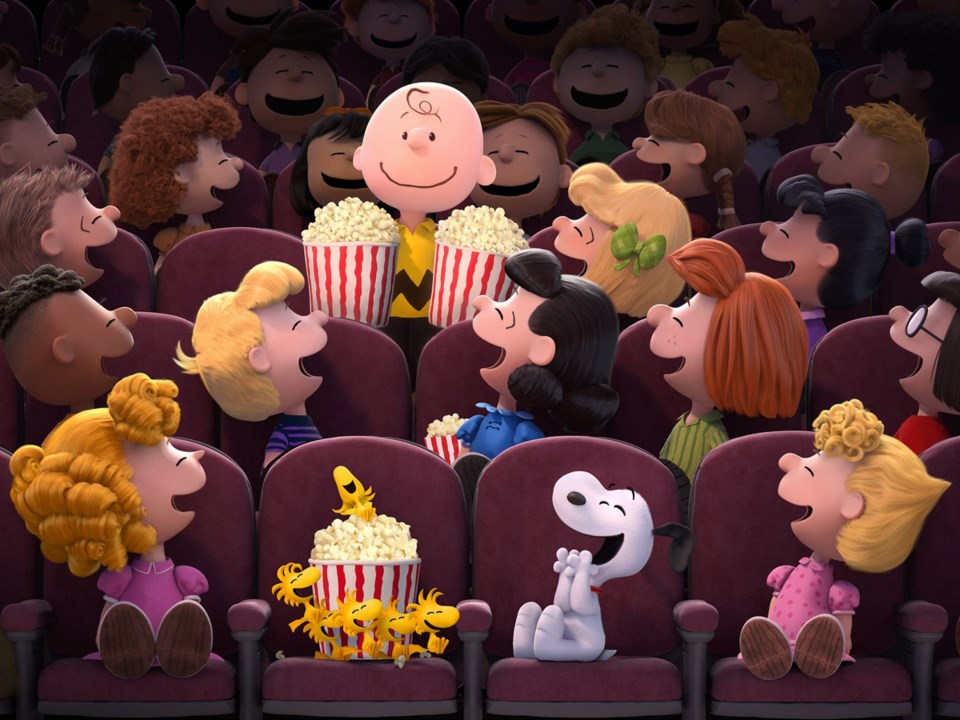Peanuts is one of those national treasures that could have gone horribly wrong as a feature film.
Especially in Blue Skyâs ambitious 3-D version, which takes characters from their trademark, pencil-drawn, black and white 2-D simplicity to a whole new dimension of colour and movement.
The temptation to up the action, tweak the gangâs wardrobe and throw in some current patter was great, I am sure. Send Charlie Brown to space, for example, or to New York City, and the merchandising opportunities might have been greater.
Instead, with the exception of Snoopyâs high-flying forays into the Red Baronâs enemy territory, the action stays firmly rooted in Charlie Brownâs neighbourhood: the school, the skating pond and the what-seems-like-forever distance between Charlie Brownâs front door and the one belonging to the Little Red-Haired Girl, who moves in across the street and immediately captures Charlie Brownâs heart.
Itâs a neighbourhood no more diverse than when Charles Schulz introduced its first African-American character, Franklin, in 1968. The adults still speak in muffled trombonese. There are rotary phones and typewriters. Lucyâs counseling advice hasnât risen with inflation (itâs still 5 cents). And Charlie Brown is still a loser.
That last point will rankle a whole generation of movie-goers raised on a âweâre all winnersâ diet. But if you watched Itâs The Great Pumpkin, Charlie Brown over Halloween, you were reminded that the show ended with Charlie Brown lugging around a bag full of rocks and Linus never catching even a private glimpse of the Great Pumpkin, both boys the object of ridicule.
Likewise in the film, Charlie Brown is allowed a few triumphs but by-and-large remains the perpetual underdog. The story revolves around Charlie Brownâs desire to win the heart of the Little Red Haired Girl (never named) by various means, such as writing the worldâs best book report or knocking âem dead at the school talent show. But large and small triumphs â such as flying a kite or kicking a football â still elude him, and he suffers from a serious lack of self-confidence.
Thatâs about it, really. Those vignettes, like cobbled-together comic strips, are interspersed with Snoopyâs literary daydreams: we see the origin of his fight with the Red Baron, and his parallel pursuit of the girl of his dreams, a fellow flying ace named Fifi.
Schroeder performs 20th Century Foxâs intro with his usual piano flourish, and the film opens with a snow day framed by Vince Guaraldiâs âSkating.â The snowy scenes and a line or two from Guaraldiâs âChristmastime Is Hereâ put The Peanuts Movie squarely in holiday-viewing contention. (A Meghan Trainor tune stands starkly out of place and time.)
Other than the animation, lush and lovely in some places and pared-down retro in others, the filmâs smartest move was casting real kids to voice the Peanuts characters. Noah Schnapp is the perfect Charlie Brown, ditto Hadley Belle Miller (Lucy), Alexander Garfin (Linus) and Mariel Sheets as Charlie Brownâs little sister, Sally. The late Bill Melendezâs voice has been resurrected as Snoopy and Woodstock.
Yes, there will be some explaining about the unfairness of life in the car ride home. And you might hear the term âblockheadâ thrown around your house. But if The Peanuts Movie proves anything, itâs that there is still room for a G-rated film on the big screen. Stop thinking that kids need car chases, girl bands and laser battles to stay entertained. As Charlie Brown himself would say, âGood grief.â



